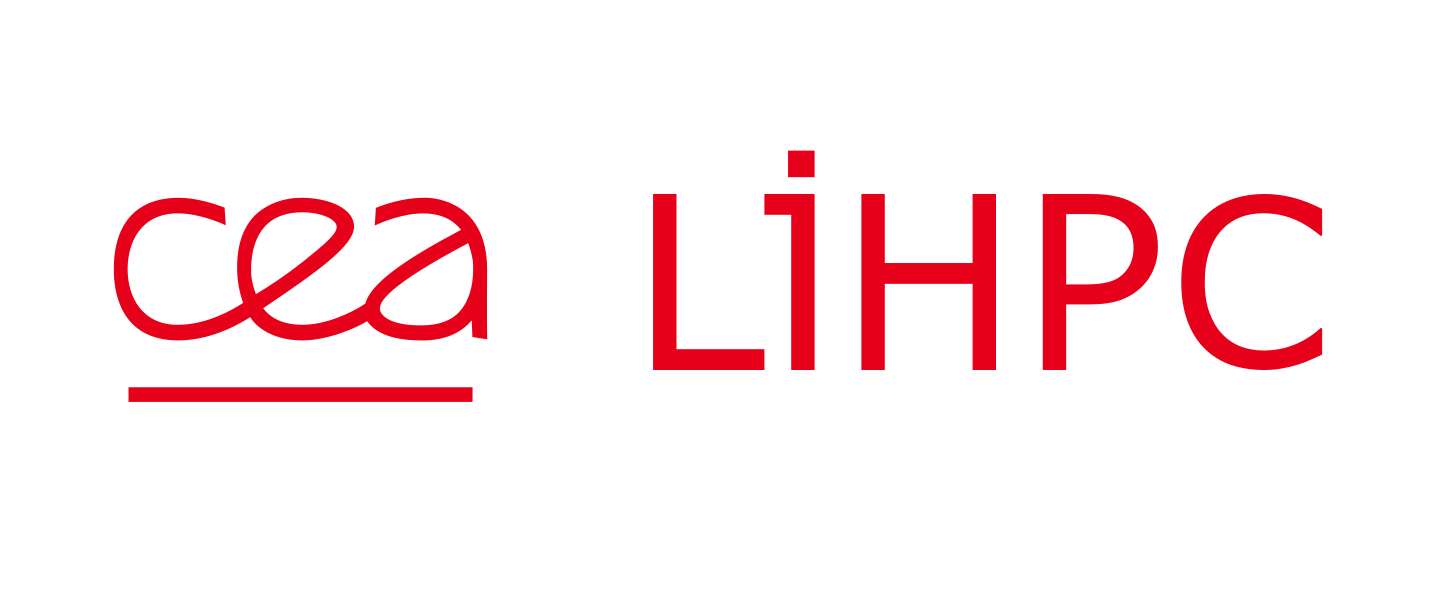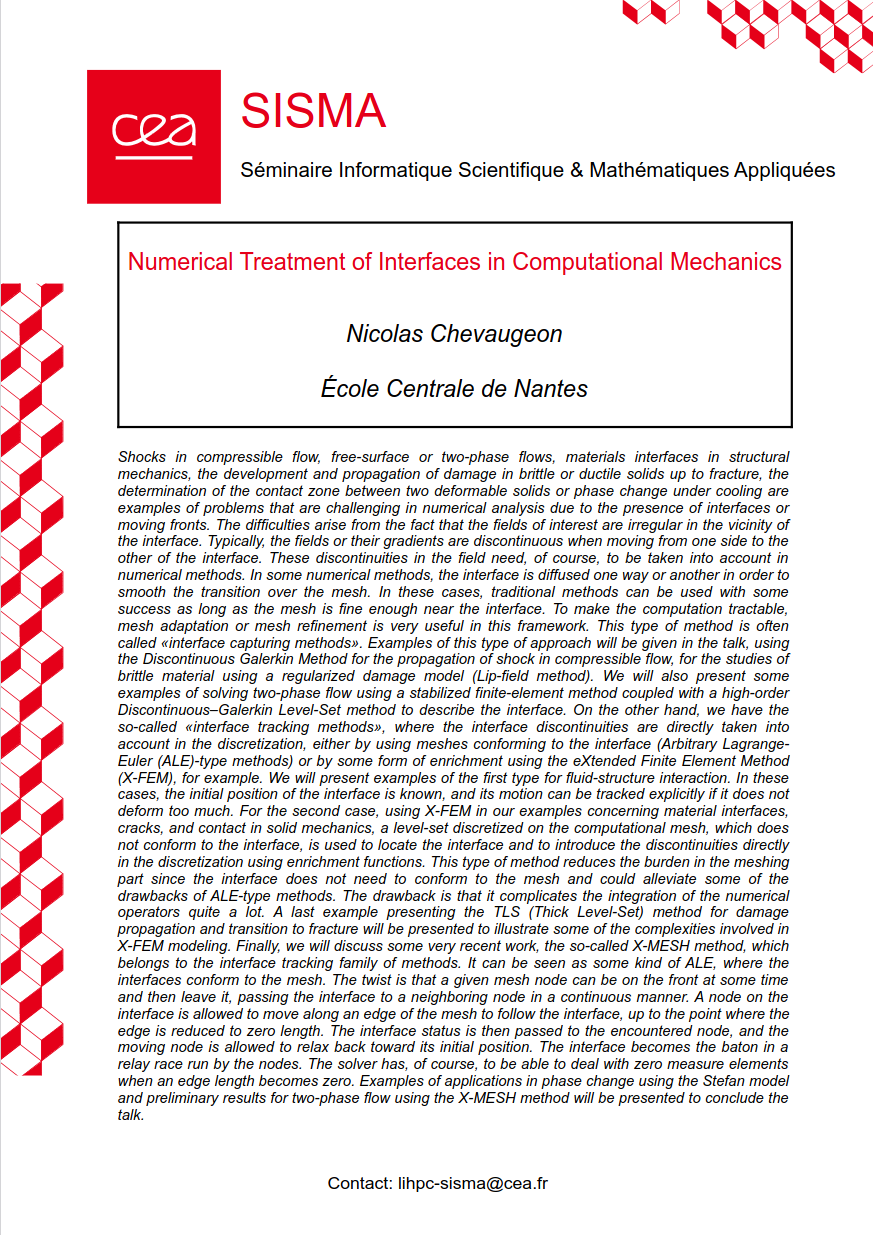Shocks in compressible flow, free-surface or two-phase flows, materials interfaces in structural mechanics, the development and propagation of damage in brittle or ductile solids up to fracture, the determination of the contact zone between two deformable solids or phase change under cooling are examples of problems that are challenging in numerical analysis due to the presence of interfaces or moving fronts. The difficulties arise from the fact that the fields of interest are irregular in the vicinity of the interface. Typically, the fields or their gradients are discontinuous when moving from one side to the other of the interface. These discontinuities in the field need, of course, to be taken into account in numerical methods. In some numerical methods, the interface is diffused one way or another in order to smooth the transition over the mesh. In these cases, traditional methods can be used with some success as long as the mesh is fine enough near the interface. To make the computation tractable, mesh adaptation or mesh refinement is very useful in this framework. This type of method is often called «interface capturing methods». Examples of this type of approach will be given in the talk, using the Discontinuous Galerkin Method for the propagation of shock in compressible flow, for the studies of brittle material using a regularized damage model (Lip-field method). We will also present some examples of solving two-phase flow using a stabilized finite-element method coupled with a high-order Discontinuous–Galerkin Level-Set method to describe the interface. On the other hand, we have the so-called «interface tracking methods», where the interface discontinuities are directly taken into account in the discretization, either by using meshes conforming to the interface (Arbitrary Lagrange- Euler (ALE)-type methods) or by some form of enrichment using the eXtended Finite Element Method (X-FEM), for example. We will present examples of the first type for fluid-structure interaction. In these cases, the initial position of the interface is known, and its motion can be tracked explicitly if it does not deform too much. For the second case, using X-FEM in our examples concerning material interfaces, cracks, and contact in solid mechanics, a level-set discretized on the computational mesh, which does not conform to the interface, is used to locate the interface and to introduce the discontinuities directly in the discretization using enrichment functions. This type of method reduces the burden in the meshing part since the interface does not need to conform to the mesh and could alleviate some of the drawbacks of ALE-type methods. The drawback is that it complicates the integration of the numerical operators quite a lot. A last example presenting the TLS (Thick Level-Set) method for damage propagation and transition to fracture will be presented to illustrate some of the complexities involved in X-FEM modeling. Finally, we will discuss some very recent work, the so-called X-MESH method, which belongs to the interface tracking family of methods. It can be seen as some kind of ALE, where the interfaces conform to the mesh. The twist is that a given mesh node can be on the front at some time and then leave it, passing the interface to a neighboring node in a continuous manner. A node on the interface is allowed to move along an edge of the mesh to follow the interface, up to the point where the edge is reduced to zero length. The interface status is then passed to the encountered node, and the moving node is allowed to relax back toward its initial position. The interface becomes the baton in a relay race run by the nodes. The solver has, of course, to be able to deal with zero measure elements when an edge length becomes zero. Examples of applications in phase change using the Stefan model and preliminary results for two-phase flow using the X-MESH method will be presented to conclude the talk.




